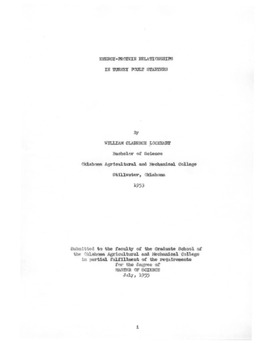| dc.description.abstract | From January 28, 1954 to January 28, 1955 a series of dix feeding trials were conducted. The prupse of Trials I, II, III, an IV was to determine the dietary energy level that was required to support the most efficient utilization of a good quality protein. Trial V conducted to find whether or not covariance analysis as outlined by Snedecor (1946) was calid when used to analyse the data of Trials I, II, III, IV and VI. Trial VI was run to determine whether lysine or methionine was the first limiting amino acid in corn-soys turkey poult starter rations containing 22 and 26 percent protein. The natural feed ingredients used in each feeding trial was chemically analysed for moisture, crude protein, far, crude fiber, calcium, phosphorous and nitrogen free extract. Average calues and biological assay calues were used in calculating the ration level of methionine and lysine in Traals I, II, and III, IV and VI, Respectively. The rations in these Trials were fed to White Holland and Broad Breasted Broze turkey poults. The poults were confined in electrically heated, wire floured metal batteries for the duration of each trial which was from 26 to 28 days.The experimental data indicate that 720 Calories of available energy per pound of ration supported efficient protein utilization at dietary protein levels of 22, 24 and 26 percent. It appears that 780 Calories of available energy supported efficient protein utilization at dietary protein levels of 22 through 28 percent. The dietary energy level of 880 Calories supported efficient protein utilization at protein levels 22 through 30 percent. The first limiting amino acid at the 22 percent protein level was found to be methionine. The addition of 0.2 percent supplementary d1-methionine at the 22 percent dietary protein level gave an added growth response and increased the efficiency with which feed was utilized. At the same protein level the addition of 0.1 percent d1-methionine of 0.15 percent 1-lysine monohydrochloride have only a slight growth response at the 26 percent protein level. The simultaneous addition of both amino acids at these levels gave a growth response much greater than when either supplementary level was fed separately. The approximate poult started requirement level for crude sulfur amino acids appears to be 0.83 and 0.89 percent at the 26 and 28 percent protein levels, respectively. | |
